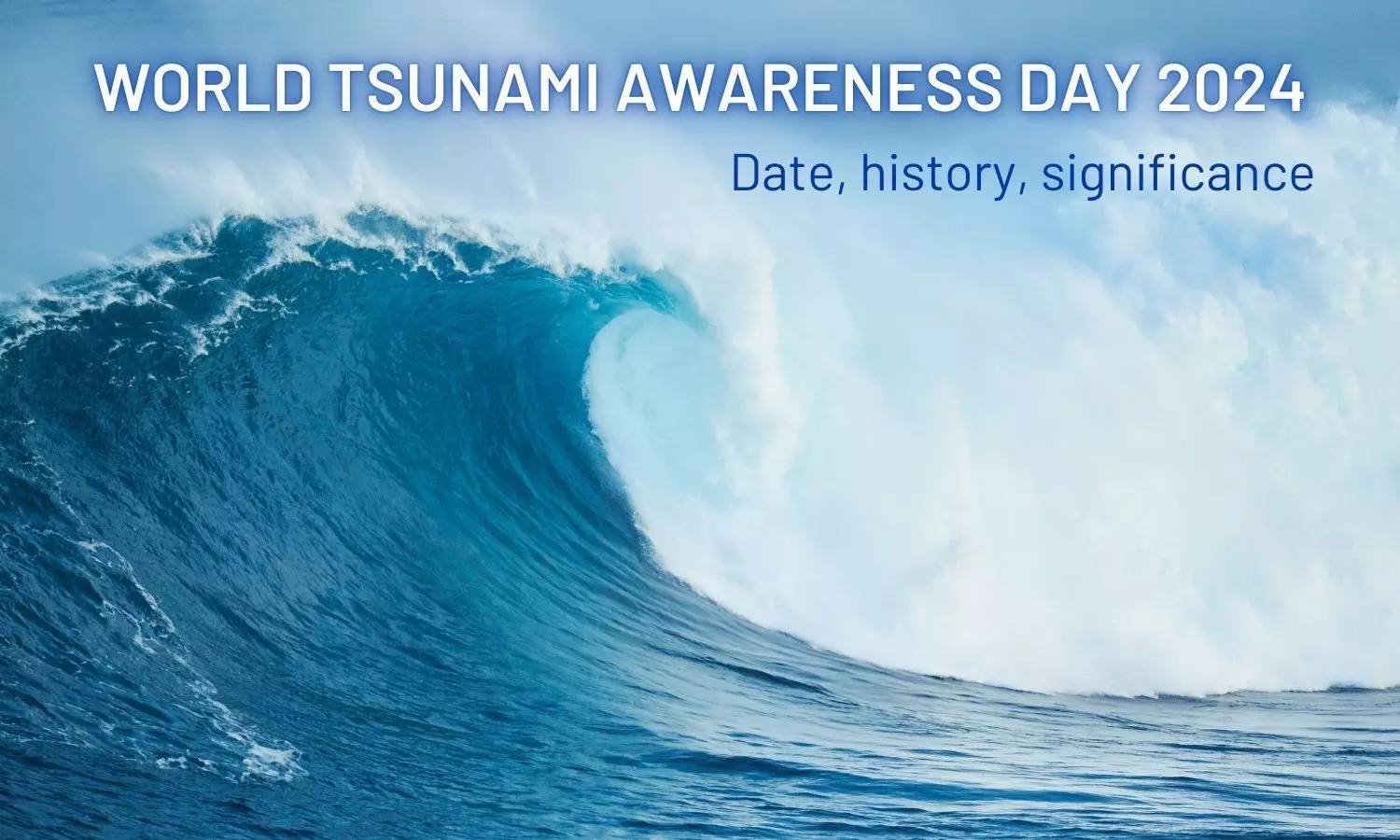World Tsunami Awareness Day 2024-Understanding Tsunami Risks and Preparedness
Learn the significance of World Tsunami Awareness Day 2024, its history, and the importance of preparedness for tsunami risk reduction strategies to safeguard lives.
World Tsunami Awareness Day 2024-Understanding Tsunami Risks and Preparedness

Tsunamis are often unpredictable and destructive. This natural disaster has claimed countless lives throughout history. With growing concern over the impact of natural disasters, the United Nations has designated 5th November as World Tsunami Awareness Day. This day serves as a global reminder to educate and prepare communities to face the risks associated with tsunamis. With the awareness people worldwide can learn how to protect themselves, their families, and their communities from such destructive events.
The History Behind World Tsunami Awareness Day
World Tsunami Awareness Day was established by the UN General Assembly on December 22, 2015, through resolution A/RES/70/203, to encourage global tsunami awareness and inspire shared, innovative actions. November 5 was selected in honour of the Japanese story of “Inamura-no-hi,” which means “burning of the rice sheaves.” This story dates back to 1858 when a Japanese farmer noticed the sea suddenly pulling back, a warning sign of an incoming tsunami. He quickly set his rice sheaves on fire to warn the villagers. Seeing the fire, they escaped to higher ground. Later, the farmer took extra steps to protect his village by building an embankment and planting trees. This story shows how being prepared and acting early can save lives during natural disasters.
Significance of Celebrating World Tsunami Awareness Day
World Tsunami Awareness Day highlights the risks associated with tsunamis. Tsunami is one of the deadliest natural disasters. These massive waves are often triggered by volcanic eruptions or earthquakes under or near the ocean. A powerful example is the Indian Ocean tsunami in December 2004, which claimed 227,000 lives across 14 countries.
In recent years, tsunamis have contributed to nearly 10 percent of global economic losses from disasters. Over 700 million people currently reside in coastal regions, particularly low-lying areas and small islands, which puts them at serious risk. Nearly half of the world's population is expected to live along the coast by 2030, making these areas susceptible to severe sea level events like flooding and tsunamis. The likelihood of extensive damage and fatalities is increasing as the number of people living along the coast rises. World Tsunami Awareness Day reminds us of the need for education, preparation, and stronger protections to help save lives and reduce damage when these disasters strike.
Tsunami Risk and Preparedness
Tsunamis are triggered by underwater events like earthquakes, volcanic eruptions, or landslides. While we can’t stop tsunamis from occurring, we can greatly reduce their impact. Effective tsunami disaster prevention includes early warning systems, stronger coastal structures, and public education on safety measures.
Coastal regions worldwide, especially in the Pacific and Indian Ocean areas, are highly vulnerable. Early detection and swift evacuation are critical in these regions. Countries like Japan, frequently hit by tsunamis, have made major investments in technology and community preparedness to minimise loss and protect lives. These efforts highlight the importance of proactive strategies and public awareness in reducing tsunami-related damage and saving lives.
How to Prepare for a Tsunami
Preparing for a tsunami can make a huge difference in safety during such an event. Here are some key steps that individuals and communities should follow to stay prepared:
1.Recognize Warning Signs - Besides official alerts, natural signs like a sudden drop in sea level or strong tremors can signal an approaching tsunami. Knowing these signs can help you act fast and move to higher ground.
2.Plan Evacuation Routes - Whether at home, work, or school, identify the nearest evacuation routes. Coastal communities should have clear signs directing people to safe areas.
3.Prepare Emergency Kits - Keep an emergency kit ready with essentials like food, water, a first-aid kit, flashlights, batteries, and important documents. Make sure it’s easily accessible in case you need to evacuate quickly.
4.Set Up Communication Plans - Create a communication plan with family members in case you get separated. Everyone should know where to go and how to contact each other.
5.Stay Informed - Follow updates from reliable sources like weather agencies and local authorities for the latest tsunami information.
6.Practice Drills and Learn - Participate in regular tsunami drills and learn about potential risks. Many communities hold drills on tsunami preparedness days to ensure everyone knows what to do.
Global Collaboration for Tsunami Preparedness and Mitigation
Deep-Ocean Assessment and Reporting of Tsunamis
This system is designed for detecting a tsunami. It can detect the disaster even if it is only one centimetre high above sea level. DART can also track ocean movements and helps in ensuring timely alerts.
UNESCO Intergovernmental Oceanographic Commission
The IOC is important for tsunami management and early warning systems. It ideally works within the UN framework for coordinating the efforts. The commission helps in assisting member states in building and implementing their tsunami warning systems. Besides, it also fosters international cooperation for research and monitoring.
Tsunami Management under the Hyogo Framework
Governments have built the Hyogo Framework for Action which is a 10-year global agreement for reducing disaster risk. They introduced the Indian Ocean Tsunami Warning and Mitigation System which includes many sea-level monitoring and seismographic stations.
Sendai Framework for Disaster Risk Reduction (2015-2030)
This framework aims to improve understanding of tsunami risks. It helps prevent future loss of life through better preparedness. It highlights the economic damages tsunamis can cause to infrastructure in densely populated coastal areas.
World Tsunami Awareness Day serves as a reminder that tsunamis are a serious threat. Raising awareness and educating communities will help people prepare in advance. It is important for reducing the devastating impact of this natural disaster.

